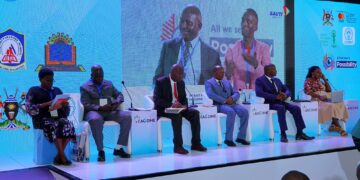The 1st East African Conference on Disability Inclusive Higher Education has kicked off at Kyambogo University with a resounding call to action for inclusive education.
The conference brought together stakeholders from East Africa to discuss strategies for deepening disability inclusion in higher education.
The Minister of State for Higher Education, John Muyingo, highlighted Uganda’s commitment to disability inclusion, citing the establishment of the Department of Special Needs in the 1970s and the White Paper on Education in 1992.
He also mentioned the government’s pledge to increase disability scholarship schemes from 64 to 320 by 2025.
Muyingo revealed that the government is working on a national inclusive education policy that will guide the implementation of inclusive education at all levels.
“This policy has gone very far. It is before the cabinet for consideration, and very soon, it will be passed. I’m going to fight and make sure that this comes out in the shortest time possible,” he said.
Kyambogo University Vice-Chancellor, Professor Eli Katunguka, said Kyambogo is dedicated to disability inclusion, with 241 students with disabilities currently enrolled.
He revealed that the university has a disability policy and a Disability Resource Center to support students.
Esther Kyozira, CEO of NUDIPU, emphasized the importance of inclusion, stating, “Inclusion is rooted within our mandate. We aim to promote rights, and dignity, and advocate for inclusion for persons with disabilities in all aspects of life.”
Patrick Ojok, PhD, the conference convener and Dean Faculty of Special Needs and Rehabilitation at Kyambogo University, said inclusive education advocates and researchers in the region are still predominantly focused on primary education, with limited attention on higher education.
He noted that the conference will help refocus attention on disability inclusion in higher education.
The conference emphasized the need for policy implementation, reasonable accommodations, and increased funding to support disability inclusion in higher education. The conference was made possible through partnerships with organizations such as NAD.








